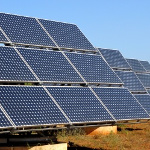2020 Renewable Energy Outlook: Waning Incentives, Redevelopment Opportunities, and Community Opposition
 Schiff Hardin’s Environmental Group took a look prospects for renewable energy in 2020 and determined that development is expected to continue through 2020 and beyond.
Schiff Hardin’s Environmental Group took a look prospects for renewable energy in 2020 and determined that development is expected to continue through 2020 and beyond.
Authors of the post in the Energy & Environmental Law Adviser blog are Alex Garel-Frantzen, Amy Antoniolli and Brett Cooper.
They discuss three key issues facing the industry for the coming year: waning federal government incentives; siting renewable energy projects at such locations as retired power plants and landfills can lower costs; and local communities can be slow to get on board with renewable energy initiatives.

